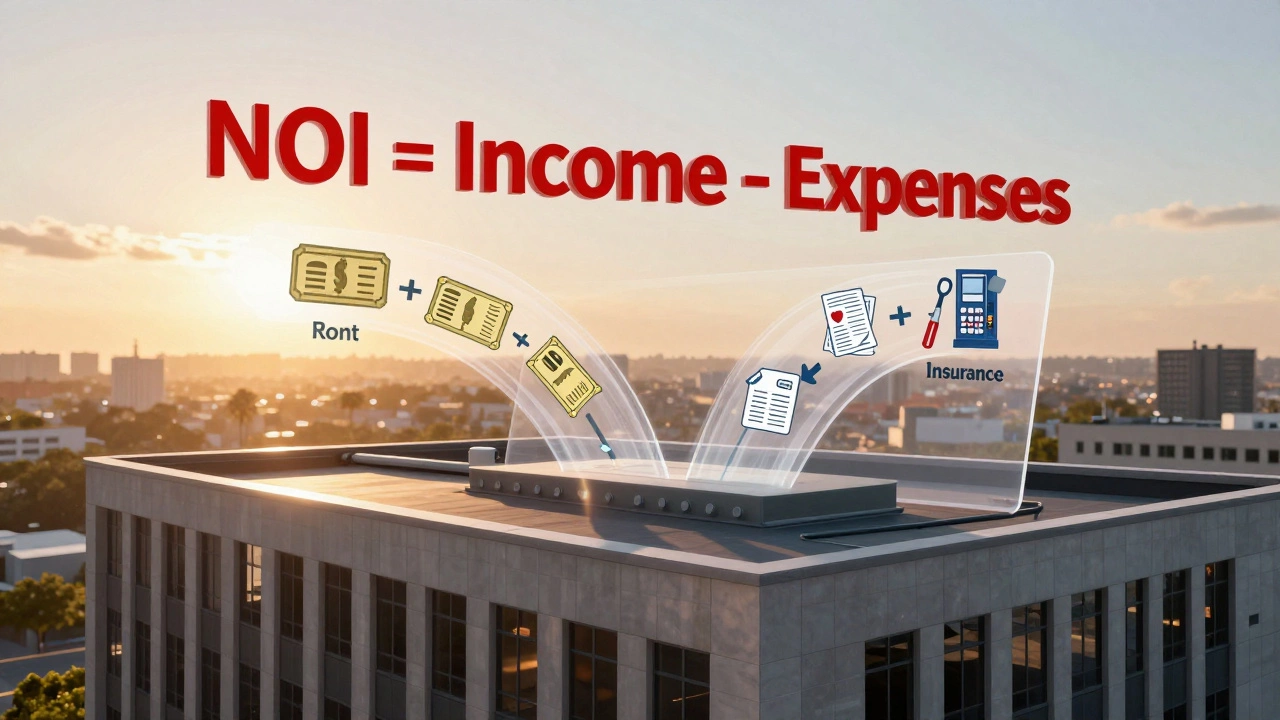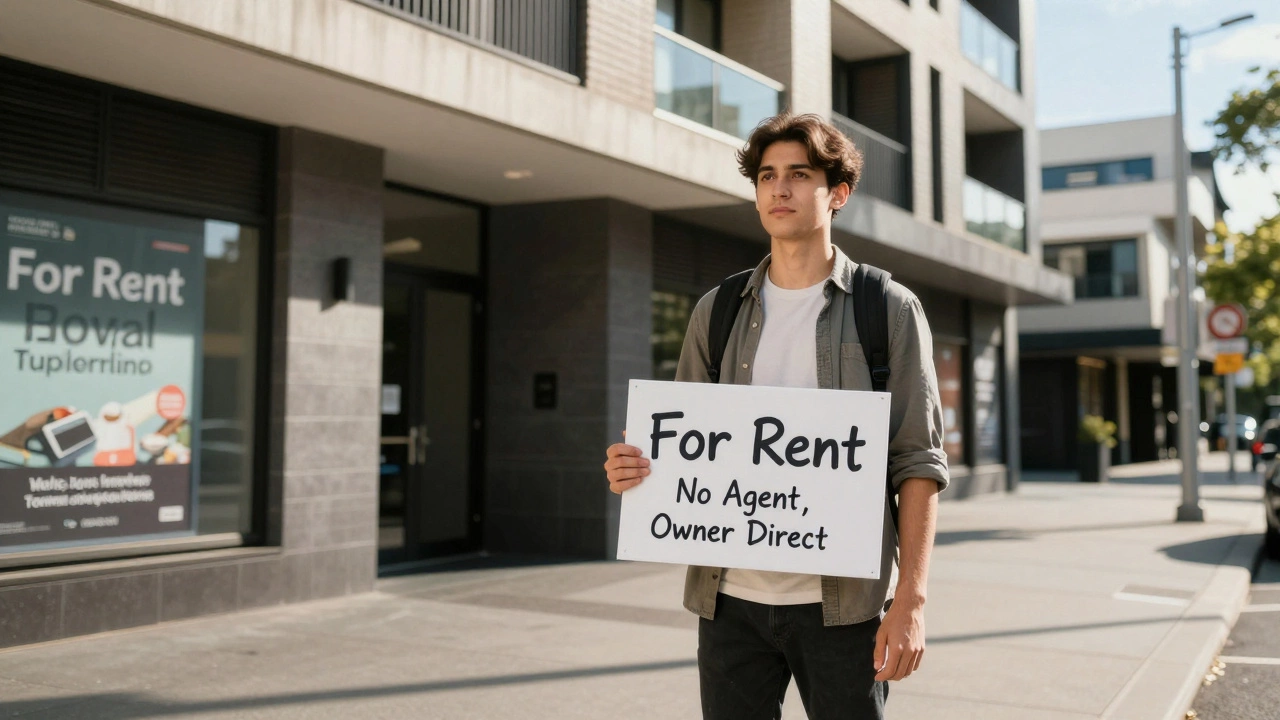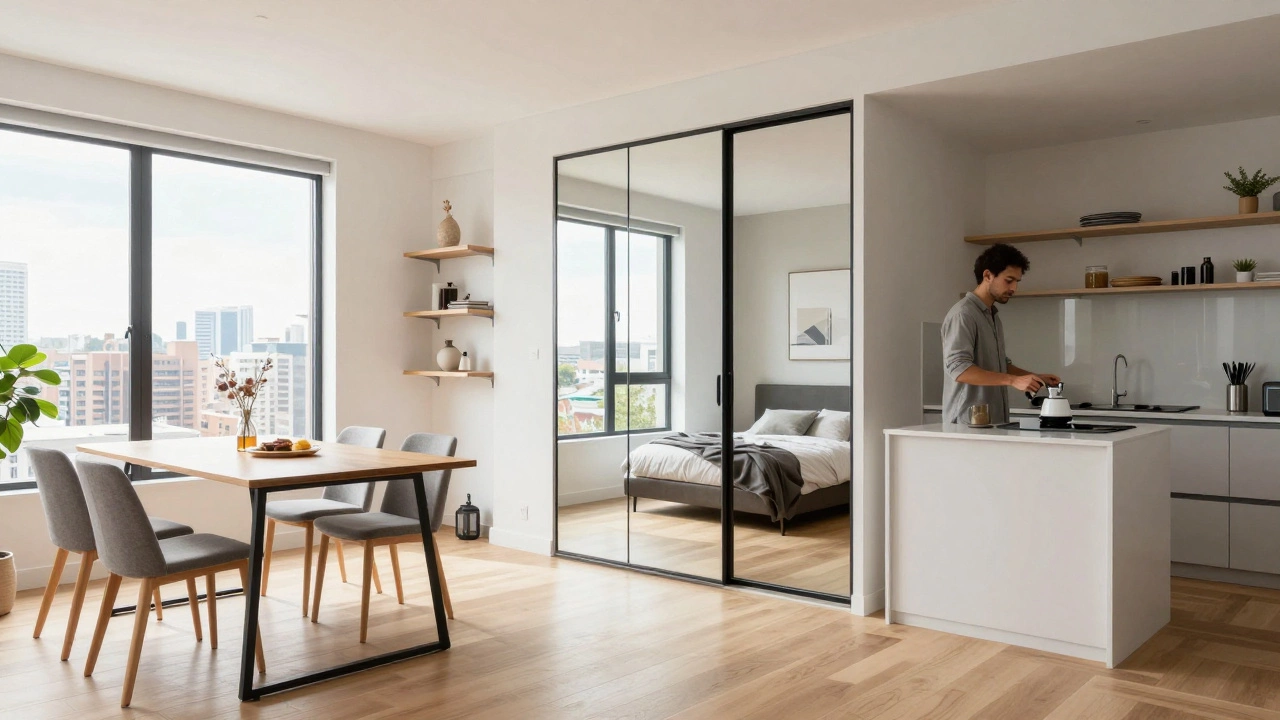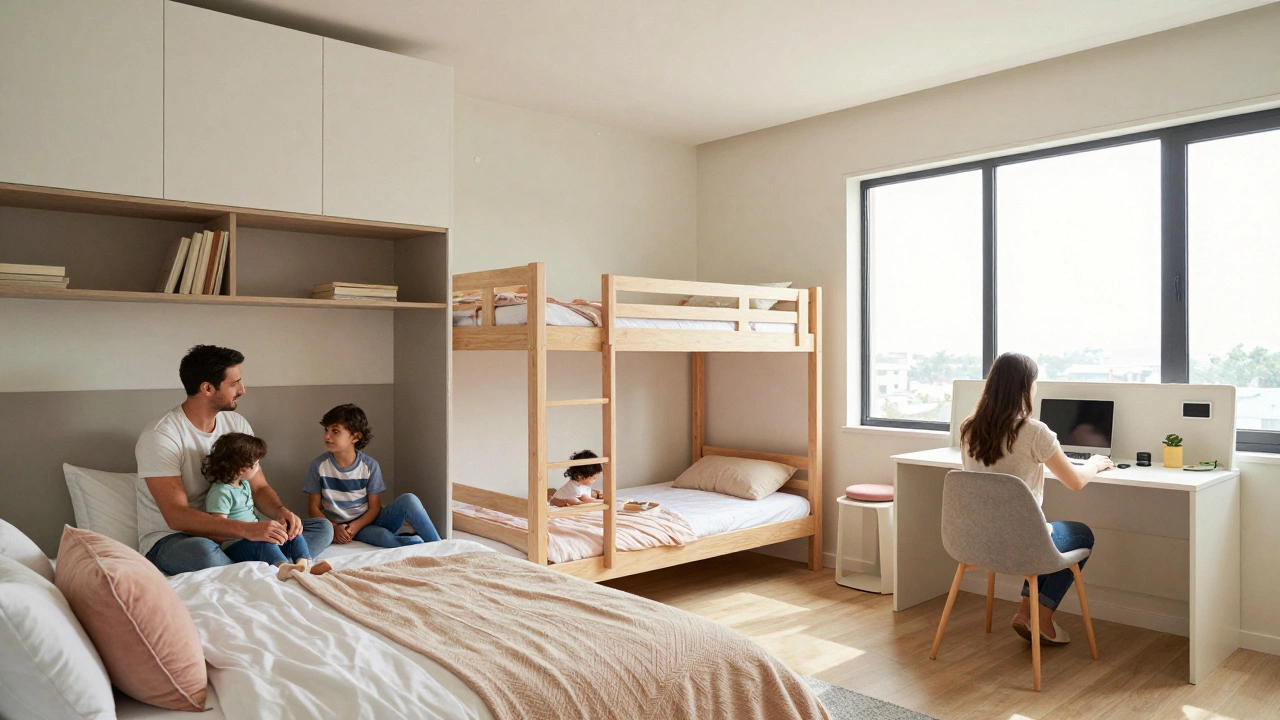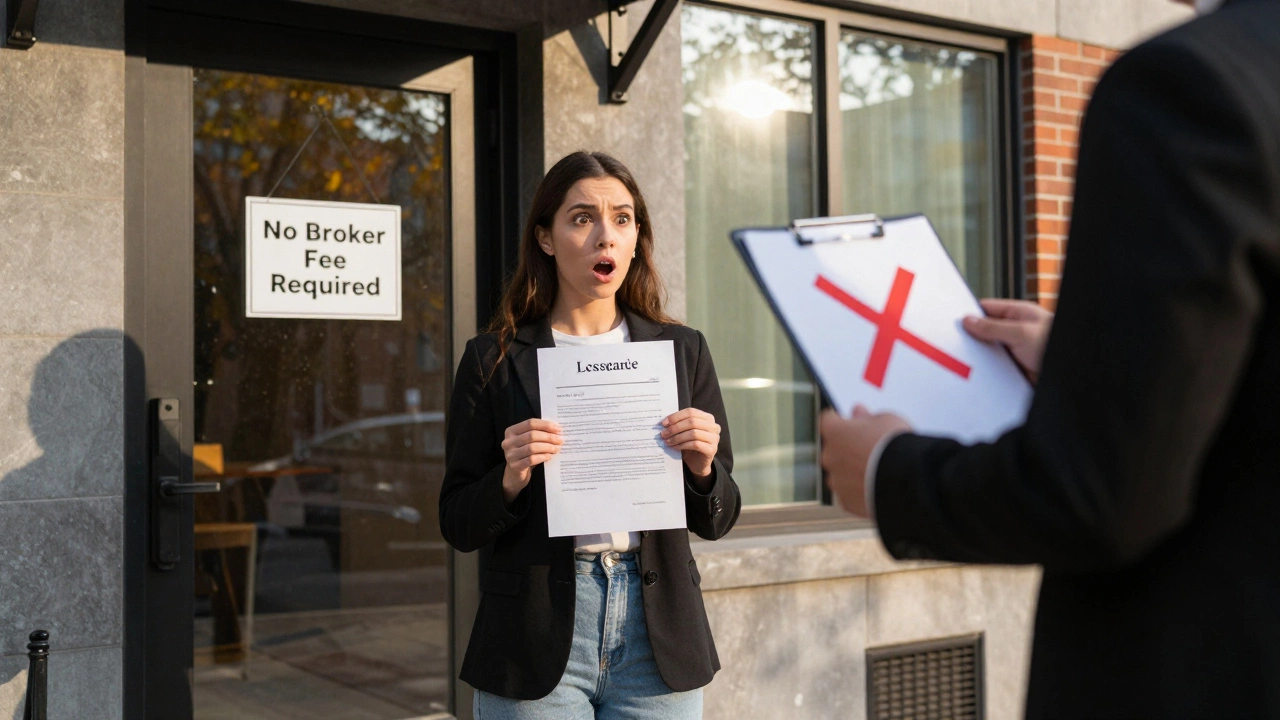Picture this: You’re scrolling through property listings, and you spot a glossy office building advertising a 7.5% cap rate. Instinctively, you wonder if that’s good, bad, or somewhere in between. Everybody talks about cap rates as if they’re some magical number, but what does it really boil down to for you, for your money, and for that brick-and-mortar reality you’re eyeing? A 7.5% cap rate can mean opportunity—or risk—depending on how you read the numbers. Let’s break down how much weight this one stat carries, who stands to win, and who has to be careful when they see it flashing on a listing.
Breaking Down the Cap Rate: Not Just a Fancy Percentage
So here’s the deal: the ‘cap rate’ stands short for ‘capitalization rate’. It’s just a simple percentage, yet it packs a punch in commercial real estate. The magic formula? Take the expected yearly net operating income (that’s your rental income minus expenses for repairs, maintenance, taxes, and so on), and divide it by the property’s current market price. The result is your cap rate, usually peppered all over listings.
For example, if a building brings in $75,000 per year after costs, and the seller’s asking for $1,000,000, then the cap rate is 7.5% cap rate ($75,000/$1,000,000). Sounds straightforward, yet there’s more bubbling underneath. This number tells you, in simple terms, how much annual cash return you’d get on your investment if you bought the property in cash, and nothing changed.
But real estate is never only about numbers on a screen. Cap rates aren’t a measure of past glory—they’re a snapshot of what you might expect, assuming things run like clockwork. And they’re always tied to location, property type, tenant stability, and market moods. For instance, the best buildings in central business districts often have lower cap rates. Why? Because people pay more for safety. Higher-risk areas or properties in need of TLC post higher cap rates—to lure you in despite bigger uncertainties.
Many investors treat cap rates almost like an interest rate on a savings account, but cap rates are messier—they’re affected by market flips, unpredictable expenses, and how well you keep the place running. The same building can have a wildly different cap rate next year if rents spike, taxes rise, or you find a golden tenant who locks in a long lease.
You might be thinking, “So what’s a good cap rate?” Here’s the twist: there’s no universal ‘good’. Back in 2023, prime office properties in NYC sometimes traded at cap rates as low as 4%—scarcity and safety had buyers piling in. Strip malls in outer suburbs or industrial spaces with spotty demand? Sellers tempted buyers with cap rates of 7-9%. The point: a 7.5% cap rate puts you in the risk-reward middle ground. Not too hot, not so cold.
Sticklers love cap rates because they simplify apples-to-apples comparisons between completely different buildings—across cities, property types, or eras. But don’t be fooled into thinking it’s the only stat you need. Just like you’d never judge a dog like Rocky by weight alone—you want the full story, right?—cap rates are just the starting line for any investment analysis.
Why 7.5%? Making Sense Of The Number In Today’s Market
So, why 7.5%? It’s just about high enough to get your attention, but not so high that you should automatically worry. In 2025, with central banks all over trying to keep inflation in check, interest rates have been swinging. Returns on risk-free assets (like government bonds) set the floor, and real estate cap rates tend to float just above them. If the U.S. 10-year Treasury offers a 4% yield, investors eyeball commercial real estate demanding at least a few points more to make up for headaches like tenant turnover, repairs, and market ups and downs.
Let’s look at some data from Q2 2025:
| Property Type | Average Cap Rate (Nationwide) | Notes |
|---|---|---|
| Prime Office (Urban Core) | 5.2% | Strong tenant demand, stable leases |
| Retail Strip Center | 7.5% | Uncertainty from online retail trends |
| Industrial/Warehouse | 6.2% | High demand, but rising supply |
| Multifamily (Suburban) | 6.7% | Rising rents, moderate turnover |
| Older Office (Secondary Market) | 8.1% | Vacancy risks, lower rents |
What pops out? Retail and some older offices rest around that 7.5% sweet spot. It signals you’re stepping into an investment where you should expect stronger returns to offset a bit more unpredictability. Maybe there are leases coming up for renewal. Maybe retail is fighting the Amazon effect, or maybe that office needs a renovation soon. These are investments that need you to pay attention and roll up your sleeves—but the payback, if managed well, can be solid.
Another reason 7.5% is eye-catching? It allows for some financial wiggle room if you’re borrowing. Lending rates for commercial real estate around 2025 hover from 6.5-7.25%, depending on your credit and the property’s condition. A cap rate that doesn’t clear those rates by a decent margin doesn’t leave you enough spread to make your monthly payments and still put something in your pocket. Properties dipped below 6% cap rates in 2021-22 when money was cheap, but now, anything below your interest rate is a risky bet that conditions will improve dramatically soon.
For investors worried about values tanking, higher cap rates may signal a bargain—or a warning sign that the property sits in a tough neighborhood, or that it’s poorly managed or old. That’s why you don’t just grab anything with a cap rate over 7%. Some folks call it a “value trap,” and more than a few have been burned trusting the number without looking at what’s behind it.

What a 7.5% Cap Rate Actually Means For Buyers, Sellers, and Lenders
Here’s where the rubber hits the road. A 7.5% cap rate isn’t a one-size-fits-all label—it means different things depending on your angle. Let’s map it out:
- Buyers see a 7.5% cap rate and often do a quick calculation: “If I buy this building and everything stays the same, I make $75K net on every million bucks I put in. Does that beat my alternatives—like the stock market, or bonds?” More aggressive buyers—those who like to renovate, re-tenant, or reposition properties—use cap rates as a starting point. If they believe they can boost rents or cut costs, the ‘going-in’ cap rate might be less important than the ‘stabilized’ cap rate (after they work their magic).
- Sellers look at cap rates when pricing their property. If the market wants a 7.5% rate to take on this type of building, and their asset’s net income is $100,000, they know the ballpark asking price should be close to $1.33 million (since $100K divided by 0.075 = $1.33M). If they want a higher price, they better show buyers a growth story or lock in long-term leases to push down the cap rate and justify the premium.
- Lenders use cap rates as part of their risk check. They want to see that the property’s income comfortably covers the loan payments. If cap rates squeeze too low, lenders worry that borrowers won’t have enough cash flow to ride out downturns. At 7.5%, many commercial lenders are happier—you have a better shot at paying the mortgage, and there’s some padding built in for surprise expenses.
Cap rates are also the secret language of ‘market cycles’. When the market feels confident and flush with cash, cap rates dip lower, and prices rise. When there’s fear or rates are high, cap rates climb—forcing prices down until investors feel comfortable taking the risk.
Sometimes a 7.5% cap rate is a sign of market opportunity, especially if you find a neighborhood starting to gentrify, or a property that’s been ignored. But don’t get carried away—there’s always a reason for a number, and your job as an investor is to sniff it out before making an offer. Ask who the tenants are, how long leases last, the age of the roof and chillers, the foot traffic, and even the crime stats nearby. Remember, unlike Rocky’s unblinking loyalty, tenants can walk when the lease is up!
One more thing: cap rates aren’t constant. If market rent rises, or you fill a vacancy, your effective cap rate can jump higher, boosting your property’s value if you decide to sell. Likewise, if a hurricane hits, or your biggest tenant leaves, you could be left juggling bills with a much lower yield than you planned.
How to Use Cap Rates Without Fooling Yourself
The worst mistake a new investor can make is staring only at the cap rate and ignoring context. The 7.5% might look like free money, but it could come loaded with fine print. Here are some fool-proof ways to use cap rates like a pro, not a sucker:
- Dig into the numbers. Don’t just take the seller’s earnings at face value. Look for hidden expenses—sometimes the maintenance figure is sandbagged, or important capital expenditures, like a new roof, are missing. Ask for utility bills and repair logs to check consistency.
- Compare like with like. Compare cap rates across similar properties in the same neighborhood. If this one is much higher, what explains the difference? Is the building older? Tenants riskier? Vacancy higher? There’s always a story behind a number that stands out.
- Account for leverage. If you’re financing your purchase, interest rates matter as much as the cap rate. If your mortgage rate is 7% and the cap rate is 7.5%, your margin for error is razor-thin. The wider the gap, the safer your bet—or, the more room you have for growth or surprises.
- Forecast changes. What happens if taxes go up? If the main tenant leaves? Smart investors model a few bad years—not just rosy projections. Stress-test your profit before you jump in.
- Factor in appreciation potential. Cap rates only capture current cash flow. But property can gain value for many reasons—neighborhood improvements, market shifts, upgrades. Consider total return, not just the yield staring at you now.
- Research the lease structure. Triple-net leases, where tenants cover taxes, insurance, and repairs, mean lower risks and might justify a lower cap rate. Short-term or weak leases, where you bear more costs, need a higher cap rate to make up for it.
Here’s something wild: a 2024 NAR survey showed that 65% of small commercial property buyers overestimated their real post-expense cap rate by at least 1%. Translation: surprises eat into your returns quick unless you go over those books with a fine-tooth comb.
And a practical tip few mention—you can often negotiate on cap rate just as much as price. If a property was sitting unsold at a 6.5% cap rate for months, but the seller is pressured, they might agree to a lower price delivering you that magic 7.5% return instead. Keep flexible and leverage market conditions to tilt the deal in your favor.
Cap rates will never tell the full story, but they’re a useful shorthand to help you filter the hundreds of deals vying for your cash. Use them as a starting point, not the finish line. Dig deeper, understand where the risks and rewards come from, and always read between the lines. After all, nobody ever made fortunes buying properties based on catchy percentages alone. They made them by knowing exactly what those percentages hide—and what they reveal.

